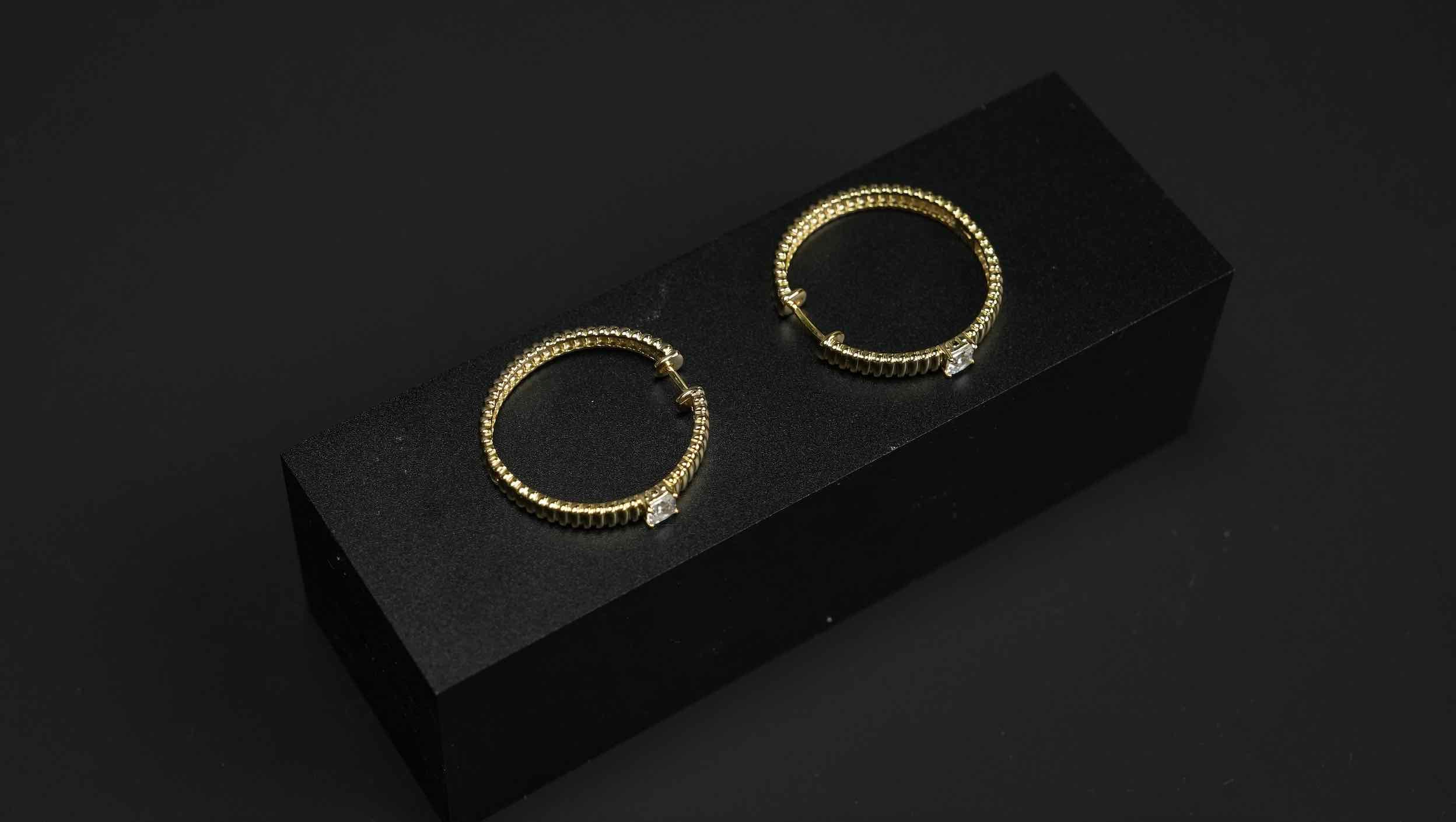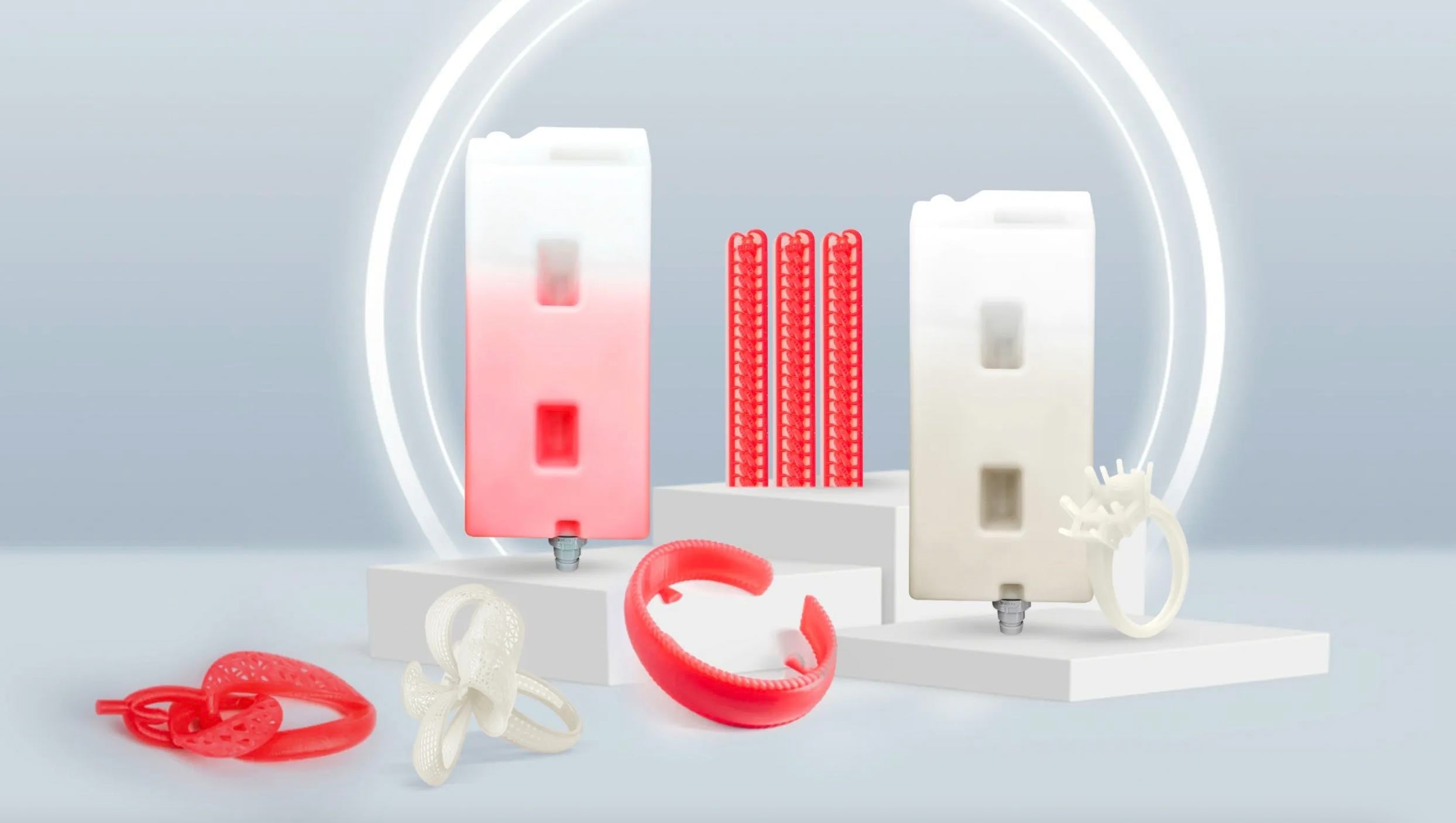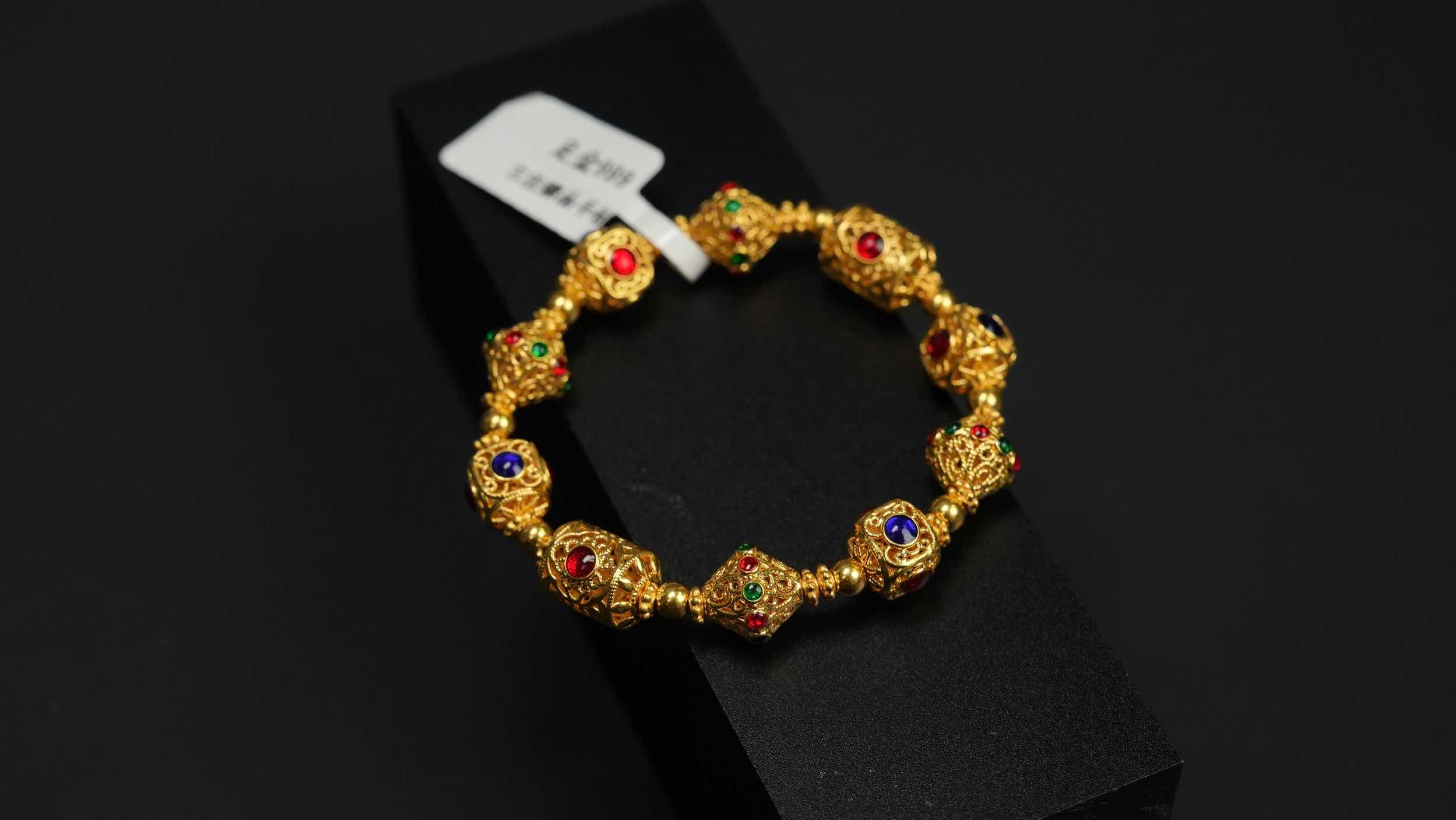Everything You Need to Know About the Flashforge WJ530 Wax 3D Printer
Why the Flashforge WJ530 Wax 3d Printer Is a Great Choice for Jewelry Manufacturers?
As more jewelry factories move from traditional jewelry manufacturing methods to digital wax 3D printing methods, the need for high-precision and high-output wax 3D printers is growing quickly. Many manufacturers are no longer just printing a few models—they are now producing large batches of wax patterns every day to meet growing orders.

The Flashforge WJ530 is at the forefront of this industry shift. It’s a high-precision wax 3D printer specially designed for creating models used in lost-wax casting for both jewelry and industrial parts. The WJ530 can handle complex and detailed designs with excellent print quality. Thanks to its accuracy, speed, and flexibility, it’s an ideal choice for jewelers who want to produce high-quality, realistic wax models quickly and reliably. It gives factories a powerful and reliable way to print wax models with very fine detail, fast printing speed, and lower production costs. This printer is specially made for professional casting workflows, and it's a great fit for jewelry makers, custom printing services, and electroforming workshops. With the WJ530, users can improve both the quality of their work and the efficiency of their entire production process.
Here are some of the key advantages of the WJ530:
1. Triple Printhead Wax 3d Printer for Faster Production
The WJ530 is the only latest-generation wax 3D printer on the market equipped with three printheads, giving it a major edge in production speed (The WaxJet 400 is an older model that also features three printheads). With this unique design, it can print more models in less time while still maintaining excellent print quality. This makes it a great solution for businesses that need to handle high-volume production on a daily basis.
Most wax 3D printers on the market typically use only one printhead, which limits both speed and output. In contrast, the WJ530 uses MultiJet Printing (MJP) technology with three synchronized piezoelectric printheads. This setup allows for fast, stable, and high-precision printing, even with large jobs.

The machine is built for continuous operation and can run 24 hours a day, 7 days a week, producing up to 12 kg of wax patterns per month. This makes it suitable for both custom one-off models and mass production during peak seasons like weddings or major holidays.

2. Very High Printing Precision
At the heart of the WJ530’s performance is its exceptional resolution of 2900×2900×1700 DPI and a layer thickness of just 15 microns. These specifications enable the output of intricate details such as filigree, micro-pavé, lattice structures, and hollow interiors—elements often unachievable by conventional resin printers. More importantly, the precision reduces polishing times by 25%–33%, thanks to smoother surfaces and less residual support marking. Jewelers report being able to design thinner walls, such as 0.23 mm, and still achieve final cast dimensions as low as 0.2 mm after polishing. In high-value applications like gold casting, this precision directly translates to less gold waste and shorter finishing workflows.

3. New Red Wax Material for Better Results
Flashforge has developed a brand-new red wax material specially designed for the WJ530. This new wax offers better toughness, which means printed models are less likely to crack or break—especially important for delicate jewelry parts. It also prints more reliably, helping users reduce material waste, avoid failed prints, and save on production costs.
From a cost-efficiency point of view, the WJ530 really stands out. Its material utilization rate reaches as high as 58–60%, and the support structures are made from a dissolvable wax, which reduces support material waste by up to 78%. Unlike SLA or DLP resin systems—where supports often leave marks that need time-consuming hand polishing—the WJ530’s wax supports dissolve completely in a solvent bath at just 43°C, leaving almost no marks and saving labor on post-processing.
What’s more, the new red wax material is suitable for wax inlay jewelry production, such as channel settings and bezel settings. Thanks to its improved toughness, even very thin wax walls used for stone inlay are less likely to deform or break during handling.
This material also offers other outstanding features:
-
Dimensional stability with a very low shrinkage rate of just 1.1%, helping to maintain model accuracy;
-
Excellent thermal stability and oxidation resistance, allowing wax models to be stored for longer without deformation;
-
Clean burnout, ensuring the wax melts away smoothly during casting without leaving ash or residue, resulting in flawless surface finishes on the final metal parts.
4. Smart Remote Monitoring
The WJ530 also comes with smart operation features that align with the needs of modern, connected workshops. It includes a built-in 2K HD camera and Wi-Fi/Ethernet connectivity, allowing operators to monitor jobs in real time. Remote alerts, job history tracking, and temperature diagnostics are all available via the WaxJetPrint 3.0 software platform. Maintenance has also been simplified through a modular hardware design, enabling quicker part replacements and minimized downtime.

5. Cleaner Burnout, Better Casting Results
Besides, compared to resin 3D printing, wax 3D printing offers a much smoother and cleaner casting process. In traditional resin-based workflows, burnout in plaster molds can take 15 to 20 hours, and there's always a risk of incomplete combustion. This often leaves ash or residue inside the mold, which can lead to rough surfaces, pitting, or other casting defects in the final metal part.
With the WJ530, these problems are minimized. Wax models burn out quickly and cleanly, leaving no ash or residuebehind. This results in smoother surfaces, fewer polishing steps, and better overall quality in the finished product. It's especially helpful for workshops with high labor costs or businesses looking to improve efficiency and reduce post-processing time.
6. Ideal for Precision Jewelry and Hard Gold Electroforming
Real-world user feedback reinforces the WJ530’s impact. During a recent visit to a jewelry production facility in Uzbekistan, the team shared that they had replaced three desktop resin printers with a single WJ510—the predecessor of the WJ530. The decision stemmed from the unreliability of resin printing parameters and the time-consuming nature of resin burnout. With the WJ510, and now WJ530, they achieved better casting outcomes, smoother surfaces, and thinner walls with less gold loss. These operational improvements resulted in lower material costs, reduced polishing labor, and greater overall productivity.

The WJ530 is also tailored for electroforming and hard-gold manufacturing, where traditional resin patterns often fail due to surface roughness or poor plating adhesion. Its compatibility with Flashforge red wax, known for strong electroplating performance, makes it ideal for creating detailed shells for electroformed jewelry. In actual production tests, a hard-gold piece weighing 15.46 g could be made with only 0.77 g of gold using a wax shell, compared to over 30g using solid metal. This kind of savings reshapes the economics of gold jewelry production.
7. Seamless Workflow with WaxJetPrint 3.0 Software
To support a seamless workflow, the WJ530 is bundled with WaxJetPrint 3.0, an industrial-grade software package designed for automatic slicing, optimized print pathing, and support generation. Combined with Flashforge’s all-in-one post-processing station, users can manage the entire casting model preparation process—from digital design to mold-ready wax pattern—under one integrated system.

In conclusion, the Flashforge WJ530 isn't just an upgrade from traditional wax or resin 3D printers—it is a complete digital production system tailored for modern jewelry manufacturing. By offering unmatched precision, multi-head productivity, superior casting performance, and real-time control features, the WJ530 empowers jewelers to move beyond prototyping and into efficient, scalable mass production. For brands looking to meet growing demand with reliable quality and lower production costs, the WJ530 is a strategic investment that delivers long-term value.
Flashforge WJ530 Specifications
| Item | Specification |
|---|---|
| Printing Technology | MultiJet Printing (MJP) |
| Build Volume | 289 × 208 × 150 mm |
| Number of Printheads | 3 piezoelectric printheads |
| Dimensional Accuracy | 20 mm ± 0.04 mm |
| Resolution | 2900 × 2900 × 1700 DPI; layer thickness: 15 μm |
| Material Utilization | Part wax utilization ≥ 55% |
| Printing Speed | ≥ 6.3 mm/h with layer thickness of 15 μm |
| Slicing Software | WaxJetPrint |
| Supported Input Formats | STL, SLC |
| Connectivity | Ethernet / USB / Wi-Fi |
| Supported Operating Systems | Windows 7 / Windows 10 (64-bit) |
| Printer UI Operating System | Linux |
| Operating Environment | Temperature: 18–26°C; Humidity: 30–70% |
| Machine Dimensions | 1352 × 775 × 1600 mm |
| Machine Weight | 480 kg |
| Packaging Dimensions | 1530 × 900 × 1837 mm |
| Packaging Weight | 630 kg |
Wax Specifications
| Property | FFWJ1200 | FFMS3200 |
|---|---|---|
| Material Name | FFWJ1200 | FFMS3200 |
| Material Type | Part material | Support material |
| Net Weight | 3.0 kg/bottle | 3.6 kg/bottle |
| Composition | 100% wax | Wax support material |
| Color | Red | White |
| Density @90°C (liquid) | 0.79 | 0.85 |
| Melting Point | 68°C | 55°C |
| Softening Point | 63°C | / |
| Volumetric Shrinkage | 1.10% | / |
| Linear Shrinkage | 0.70% | / |
| Needle Penetration | 9 | / |
| Ash Content | < 0.01% | / |
| Description | High-precision castable wax material | Hands-free dissolvable support material |



